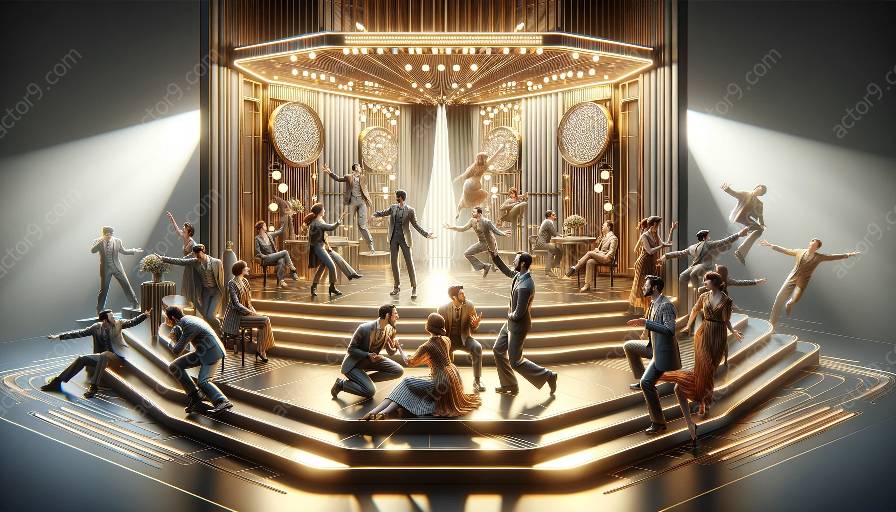Contemporary theatre is experiencing a shift towards embracing improvisation as an integral part of the performance. This has sparked discussions about the future prospects for improvisation in the context of theatre, including the potential developments and challenges that come with it.
The Evolution of Improvisation in Theatre
Improvisation in theatre has a long history, dating back to the ancient Greeks and continuing through the Commedia dell'arte tradition in Italy. However, contemporary theatre has seen a resurgence of interest in improvisation as a means of creating dynamic and spontaneous performances that engage audiences in new and exciting ways.
Impact on Artistic Expression
The future prospects for improvisation in contemporary theatre hold immense potential for expanding artistic expression. Improvisational techniques empower actors to react in the moment, creating raw and authentic performances that resonate deeply with audiences. This shift towards spontaneity and authenticity has the potential to revitalize the theatre landscape and attract a new generation of theatregoers.
Collaborative Creativity
One of the key prospects for improvisation in contemporary theatre lies in its ability to foster collaborative creativity. Improvisational practices encourage actors, directors, and other creatives to work together in a fluid and responsive manner, resulting in productions that are truly unique and unpredictable. This collaborative approach has the potential to break down traditional hierarchical structures within theatre and pave the way for more inclusive and diverse creative processes.
Challenges and Opportunities
While the future of improvisation in contemporary theatre appears promising, there are also challenges to navigate. Balancing the spontaneity of improvisation with the need for structure and coherence in theatrical productions presents a significant challenge. Additionally, the ongoing need to develop training programs and resources that support the growth of improvisational skills among theatre practitioners is a crucial facet of the prospects for improvisation in contemporary theatre.
Technological Integration
Looking ahead, technological advancements are likely to play a significant role in shaping the future prospects for improvisation in contemporary theatre. Virtual reality, augmented reality, and interactive multimedia platforms offer exciting opportunities for integrating improvisational elements into immersive theatrical experiences. This fusion of technology and improvisation opens up new frontiers for artistic exploration and audience engagement.
Conclusion
In conclusion, the future prospects for improvisation in contemporary theatre hold great promise for the evolution of the art form. From impacting artistic expression and fostering collaborative creativity to embracing technological integration, improvisation is set to play a pivotal role in shaping the theatre of tomorrow. Navigating the challenges while harnessing the opportunities presented by improvisation will be essential in ensuring its continued growth and relevance in contemporary theatre.




























